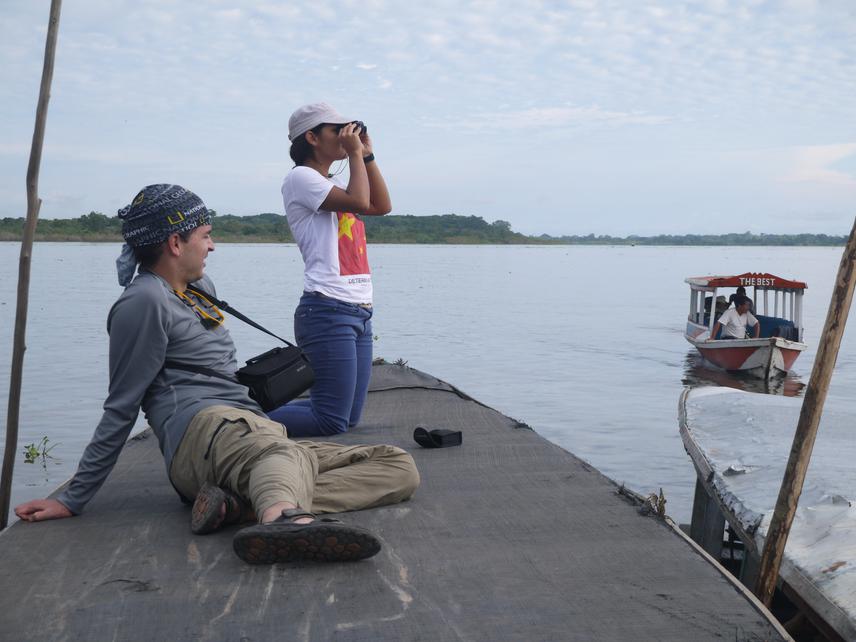Elizabeth Campbell
Other projects
29 Mar 2016
Developing a Community-Based Tourism Program Focused on the Ecosystem Services of the Yarina Lagoon in the Peruvian Amazon
The project aims to work in Yarinacocha lagoon, located 7 km from one of the biggest cities in the Peruvian Amazon, Pucallpa, collecting baseline information on river dolphin populations and human interactions.
The tucuxi (Sotalia fluviatilis) and boto (Inia geoffrensis) are listed as Data Deficient in the IUCN Red list due to the limited information on threats, ecology and population trends. Threats to these Amazon river dolphins include their use for medicinal purposes, bycatch in fisheries and habitat degradation.

It serves as a river pass to the Ucayali River (one of the main arteries of communication for several towns or cacerios spread along the Amazon). Communities along the Ucayali are highly dependent year-round on this means of transport (e.g. people, timber, food, medicines), especially in the rainy season when roads are flooded.
Information such as distribution, population size, and threats are key in conservation management of wildlife species. This project will collect baseline information on current river dolphin populations and human interactions with the Yarina community. Research will generate data on abundance, distribution, peak hours of activity and habitat use for both species for four seasons of the year. We will also know if boat traffic has an impact of dolphin behaviour and distribution. This information will serve the community in developing future conservation and management plans. Workshops would achieve more awareness and knowledge on river dolphins in community, and hopefully, motivate lagoon users to aid in conservation efforts.
Research in the Yarinacocha lagoon would produce valuable, new information. First, this population of river dolphins has never before been estimated or studied. Second, information on both species is limited but necessary in informing future conservation and management efforts. Third, this area has a fast-growing human population and its interactions with cetacean populations need to be assessed. Finally, past work with both species in Peru has been limited to protected areas. This project would provide an overview of the possible threats river dolphins face and possible solutions that may be available (e.g. regulations on boat traffic, preferred habitats within the lagoon, and the overlaps with human activities). The information gathered in this study will also directly serve users of the lagoon – including tour operators and boat transport - to be better informed and to conduct their activities more responsibly.